Content
It is very useful to feed honeysuckle in spring, although this shrub is not too picky, it responds very well to fertilization. To ensure maximum fruiting for him, you need to find out exactly how to feed him.
Features of spring feeding of honeysuckle
Many gardeners are of the opinion that unpretentious berry bushes do not need feeding at all in the spring and bear fruit well without fertilizers. However, this is not true, it is necessary to feed the honeysuckle, otherwise its yield will be reduced.
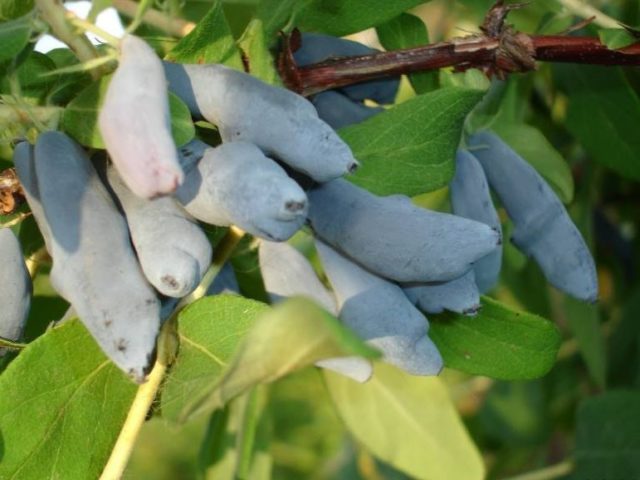
You need to feed the bushes - this improves fruiting
The roots of the plant are long, but superficial and do not sink deep into the ground. Therefore, the shrub quickly takes nutrients from the soil after planting. So that the plant does not have to literally fight for survival, it must be fertilized in the spring, at least 3 times from early spring to mid-summer.
The peculiarities of fertilization in the spring are that with each feeding the gardener has a specific goal:
- The first feeding is needed so that the plant recovers faster after winter and begins to actively increase the green mass.
- The second dressing is carried out to improve the quality of flowering and to maximize fruit set.
- The third time you need to feed the honeysuckle closer to summer in order for the berries to ripen larger and more juicy.

During the spring, an average of three plant dressings are carried out.
How to feed honeysuckle in spring to bear fruit
Spring feeding of honeysuckle with mineral fertilizers is needed not only for it to actively develop, but also for the shrub to bear maximum fruit in summer. In this case, you can use all types of fertilizers, not only organic matter, but also minerals.
In the spring, you can feed the shrub with the following fertilizers:
- Manure and compost. Organic matter quickly decomposes and saturates the upper layers of the soil with nitrogen, it is this compound that is necessary for the growth of the shrub and for the development of its shoots and foliage. In addition, top dressing of honeysuckle in the spring without chemicals additionally allows mulching, thanks to a layer of organic matter, moisture does not evaporate from the soil so quickly during irrigation.
- Wood ash, urea and herbal infusions, they also saturate the soil with nitrogen necessary for plant development, and contribute to an increase in the number of leaves and their size.
- Mineral mixtures containing phosphorus - this substance is important primarily for the roots. Phosphorus helps the shrub to root better in the area, makes the roots stronger and healthier, and promotes the growth of new root branches. Accordingly, the plant begins to receive more nutrients from the soil.
- Fertilizers containing potassium, feeding the shrub with potassium is especially useful before flowering and immediately during it. The mineral substance increases the quantity and quality of flower buds, which means it also contributes to an increase in fruiting.In addition, if you feed the honeysuckle with potassium in time, the plant will become more resistant to fungi and pests.
Both potassium and phosphorus are beneficial throughout the year. But nitrogen should be introduced into the soil exclusively during the growth period in the spring, in subsequent periods it can only disrupt the biological cycle of the shrub.
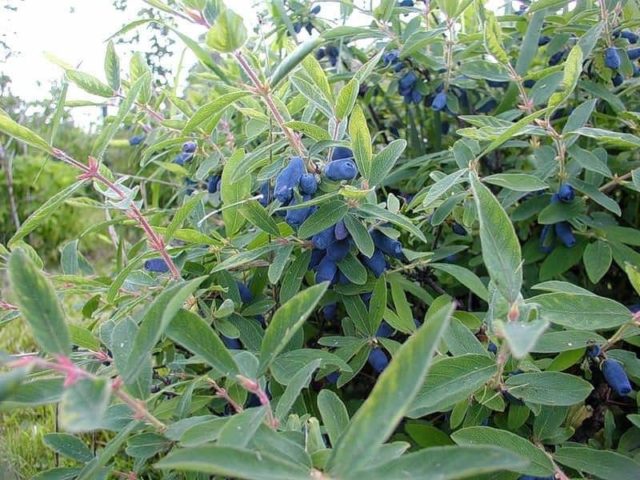
Nitrogen is added to the soil at the roots only in spring
How to feed honeysuckle in spring before flowering
In early spring, buds are just beginning to bloom on the branches. Some gardeners do not see the point in feeding the shrub during this period. However, it is before flowering that the plant needs most of all fertilizers, they are necessary for rapid development and healthy growth.
In the period before the blooming of the buds, honeysuckle can be fed with several substances:
- Urea... Around the bush, it is necessary to dig a shallow groove and pour fertilizer into it in a circle, and then throw earth on top and water the plant properly. Top dressing of honeysuckle in the spring with urea should be carried out at the rate of 100 g of substance per 1 bush.
- Ammonium sulfate or ammonium nitrate. These substances also contain a high amount of nitrogen, so feeding the bush with them will be beneficial for the development of leaves and new shoots. Fertilizers are laid in the soil in a similar way, but the dosage is doubled.
- Wood ash... To feed an adult bush, you need to use about 400 g of ash.
Also, before flowering, manure and compost will be beneficial; with natural decomposition, they release a large amount of nitrogen compounds.
How to feed honeysuckle during flowering
During the budding period, any plant is especially sensitive to external influences and vulnerable. That is why during flowering it is recommended to postpone most of the garden work: pruning, treatment from insects and diseases.
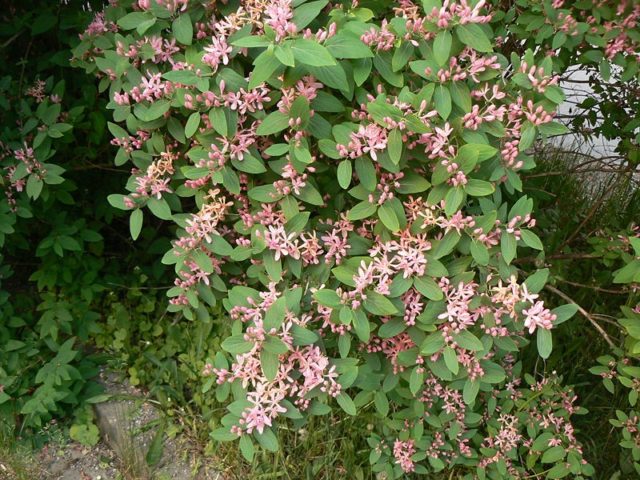
During the flowering period, top dressing will not harm the honeysuckle bushes.
But if you feed the honeysuckle in April during the blooming of the buds, it will only benefit it. The shrub will receive additional nutrients and will be able to flower more successfully by creating the maximum number of ovaries. In addition, fertilizers will strengthen the endurance of honeysuckle in the spring and prevent it from suffering from accidental cold snaps or diseases.
When flowering, it is recommended to feed the plant with vermicompost - an organic mixture that is obtained after processing the compost with earthworms. The procedure is carried out as follows: 1 kg of dry matter is diluted in a bucket of clean water and left for a day, and then the solution is poured into the root area of the bush. You can also use liquid vermicompost, in which case you need to dilute only 1 glass of the product in a bucket of water and feed the honeysuckle immediately after that.
How to feed honeysuckle after flowering
For the third time, it is recommended to feed the fruiting honeysuckle in May or even in mid-June. In this case, the following mixtures and substances can be used:
- bird droppings - 1 kg of fertilizer is diluted in 10 liters of water;
- mullein - the proportions when diluted with water are 1 to 6;
- humus - when feeding honeysuckle in May, 4 kg of organic matter should be scattered at the roots.
In the middle of summer, you can also fertilize the plant. For example, during the ripening period, 15 g of nitrophoska and 7 g of potassium sulfate can be diluted in a bucket of water, such a mixture will strengthen the root system of a fruiting shrub. Closer to August, under each of the honeysuckle bushes, you can pour 500 g of wood ash.
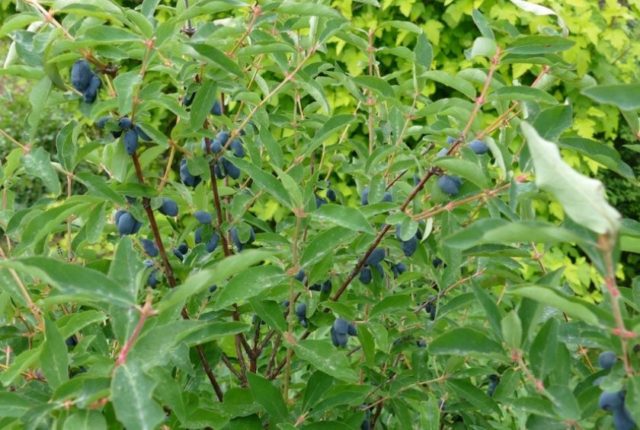
Potassium and phosphorus are beneficial for the plant after flowering
How to feed honeysuckle in the spring in the country
To feed the plant with benefit, you need to know the rules for the procedure. The spring feeding scheme for honeysuckle offers 2 options:
- Embedding dry fertilizers into the soil... When using this option, a groove several centimeters deep is dug in a circle near the bush and dry granules of minerals are sown into it. You can also just shallowly loosen the soil at the roots in the spring, fertilize the shrub, and then sprinkle the fertilizer on top with soil. With dry incorporation of minerals, the plant must be watered abundantly in the spring, otherwise the dressing will be absorbed into the soil more slowly and worse.
- Watering with fertilizers... Minerals or ash can be dissolved in a bucket of water, stirred thoroughly and poured under the stem of the plant in the spring. In this case, the gardener will be able to achieve two goals at once, the shrub will receive both the necessary moisture and useful nutrients.
To properly feed honeysuckle, you need to take into account the weather. If the spring is warm and humid, then it is better to use a "dry" method of fertilization, garden bushes already get enough moisture from natural precipitation. But with scant rains in the spring, you can combine top dressing with watering - this will benefit the shrubs.
It is important to remember that bushes can only be fertilized from the second year of life. The first fertilizers are embedded in the soil even when the seedling is planted, therefore, until the next season, the young plant does not feel the need for nutrients.
For the first time in a season, you need to feed honeysuckle only after the snow has completely melted on the site, and the soil warms up at least a little. Embedding fertilizers in frozen ground will not be of much benefit.
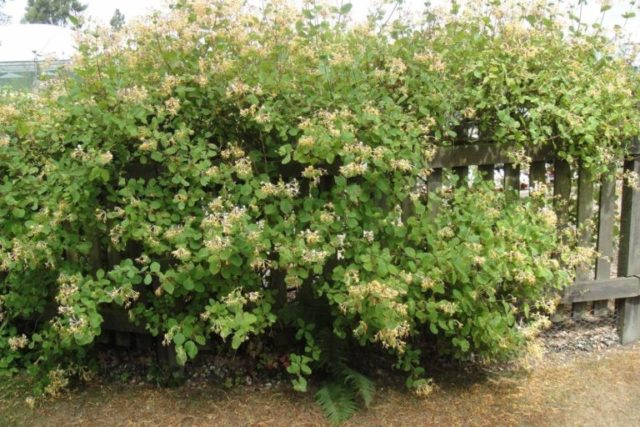
If the spring is rainy, then top dressing is best applied dry.
Tips from seasoned gardeners about feeding honeysuckle in spring
Experienced gardeners advise adhering to a few simple rules - if they are observed, it will be better to bear fruit:
- It is not enough just to fertilize the honeysuckle in the spring to increase the yield and then postpone caring for it until the fall. The fruit shrub needs care throughout the growing season. In spring, the soil at the roots of honeysuckle must be loosened from time to time, with a lack of moisture, water the bush. If the soil in the area with the plant is too dry and impermeable for oxygen, then honeysuckle will grow worse, even if it is fed on time.
- After carrying out spring dressings, the land under the fruit bush should be mulched. A thick layer of mulch will allow you to achieve several goals at once. First of all, it will improve the absorption of moisture and fertilizers into the soil and prevent rapid evaporation of water and nutrients. In addition, mulch will slow down the germination of weeds, which take away some of the fertilizer, and will itself serve as an organic fertilizing during the decomposition process.
- Experienced gardeners not only strive to feed the fruit bushes with organics and minerals in the spring. On the site with honeysuckle, it is useful to sow siderates, plants that will later serve as fertilizer for shrubs, for example, peas or clover. Siderata are planted in spring or immediately after harvest, and when they grow, they are cut and immediately embedded in the ground. Thus, even in the current season, the plants have time to decompose and give the soil nutrients that will benefit the shrubs.
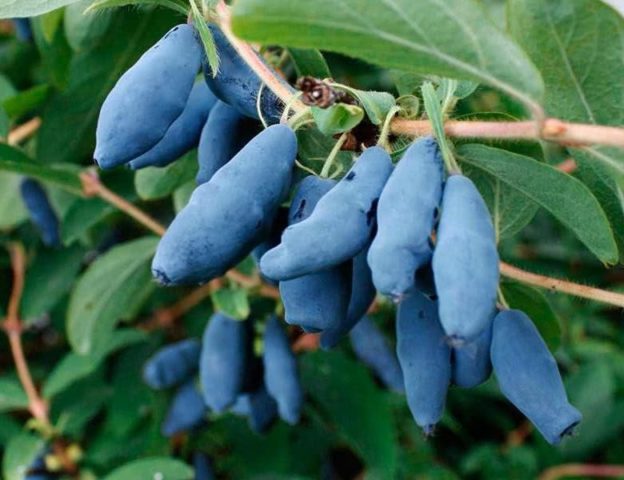
It is useful to sow special siderate grasses next to fruit-bearing bushes.
Experienced gardeners and gardeners recommend not forgetting about such a procedure as sanitary thinning in the spring. If you free the bush from weak, dry and broken branches in time, then fertilizers for honeysuckle in the spring will bring more benefits, nutrients will not go to support the vital activity of extra shoots.
Conclusion
You can feed honeysuckle in the spring with both useful minerals and organic mixtures. It is important to follow the basic rules for feeding, do not add nitrogen to the soil with the onset of summer, do not flood the bushes with excess moisture and adhere to the recommended feeding dosages in the instructions.








